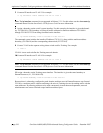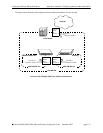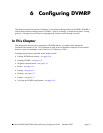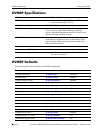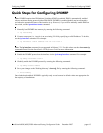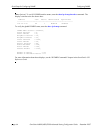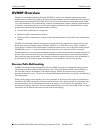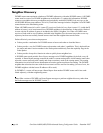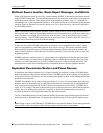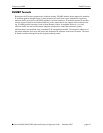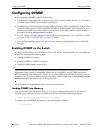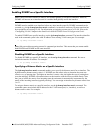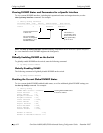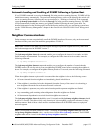
DVMRP Overview Configuring DVMRP
page 6-6 OmniSwitch 6800/6850/9000 Advanced Routing Configuration Guide December 2007
Neighbor Discovery
DVMRP routers must maintain a database of DVMRP adjacencies with other DVMRP routers. A DVMRP
router must be aware of its DVMRP neighbors on each interface. To gather this information, DVMRP
routers use a neighbor discovery mechanism and periodically multicast DVMRP Probe messages to the
All-DVMRP-Routers group address (224.0.0.4). Each Probe message includes a Neighbor List of DVMRP
routers known to the transmitting router.
When a DVMRP router (let’s call it “router B”) receives a Probe (let’s say from “router A”), it adds the IP
address of router A to its own internal list of DVMRP neighbors on that interface. It then sends a Probe of
its own with the IP address of router A included in the Probe’s Neighbor List. When a DVMRP router
receives a Probe with its own IP address included in the Neighbor List, the router knows that a two-way
adjacency has been successfully formed between itself and the neighbor that sent the Probe.
Probes effectively serve three main purposes:
• Probes provide a mechanism for DVMRP routers to locate each other as described above.
• Probes provide a way for DVMRP routers to determine each others’ capabilities. This is deduced from
the major and minor version numbers in the Probe packet and directly from the capability flags in the
Probe packet.
• Probes provide a keep-alive function in order to quickly detect neighbor loss.
A DVMRP router sends periodic Route Report messages to its DVMRP neighbors (by default, every 60
seconds). A Route Report message contains the sender’s current routing table, which contains entries that
advertise a source network (with a mask) and a hop-count that is used as the routing metric.This routing
information is used to build source distribution trees and to perform multicast forwarding. The DVMRP
neighbor that advertises the route with the lowest metric will be used for forwarding. (In case of a tie, the
DVMRP neighbor with the lowest IP address will be used.)
In DVMRPv3, a router will not accept a Route Report from another DVMRP router until it has estab-
lished adjacency with that neighboring router.
Note. Older versions of DVMRP use Route Report messages to perform neighbor discovery rather than
the Probe messages used in DVMRP Version 3.



